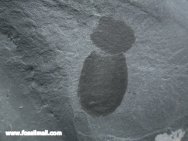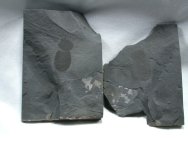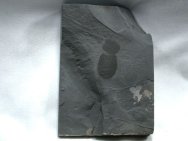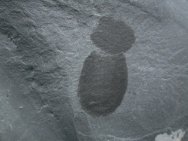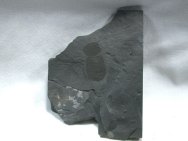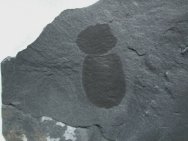Crumillospongia sp.
Phylum Porifera; Class Demospongia, Subclass Ceractinomorpha, Family Hazeliidae
Geological Time: Middle Cambrian
Size: 20 mm and 15 mm long by 13 mm and 10 mm across
Fossil Site: Wheeler Formation, House Range, Millard County, Utah
|
Sponge fossils from the Cambrian Explosion are found in various Cambrian sites in North America, most notably the Burgess Shale of Canada, and the Cambrian stratigraphy of House Range of Utah, like this specimen from the Wheeler Formation. Many sponges are also described from the Chengjiang biota of China. Sponges are believed to have undergone repeated radiations during the Phanerozoic, and probably attained their greatest diversity during the Cretaceous. Also
See: Utah Cambrian Explosion
Fossils |
